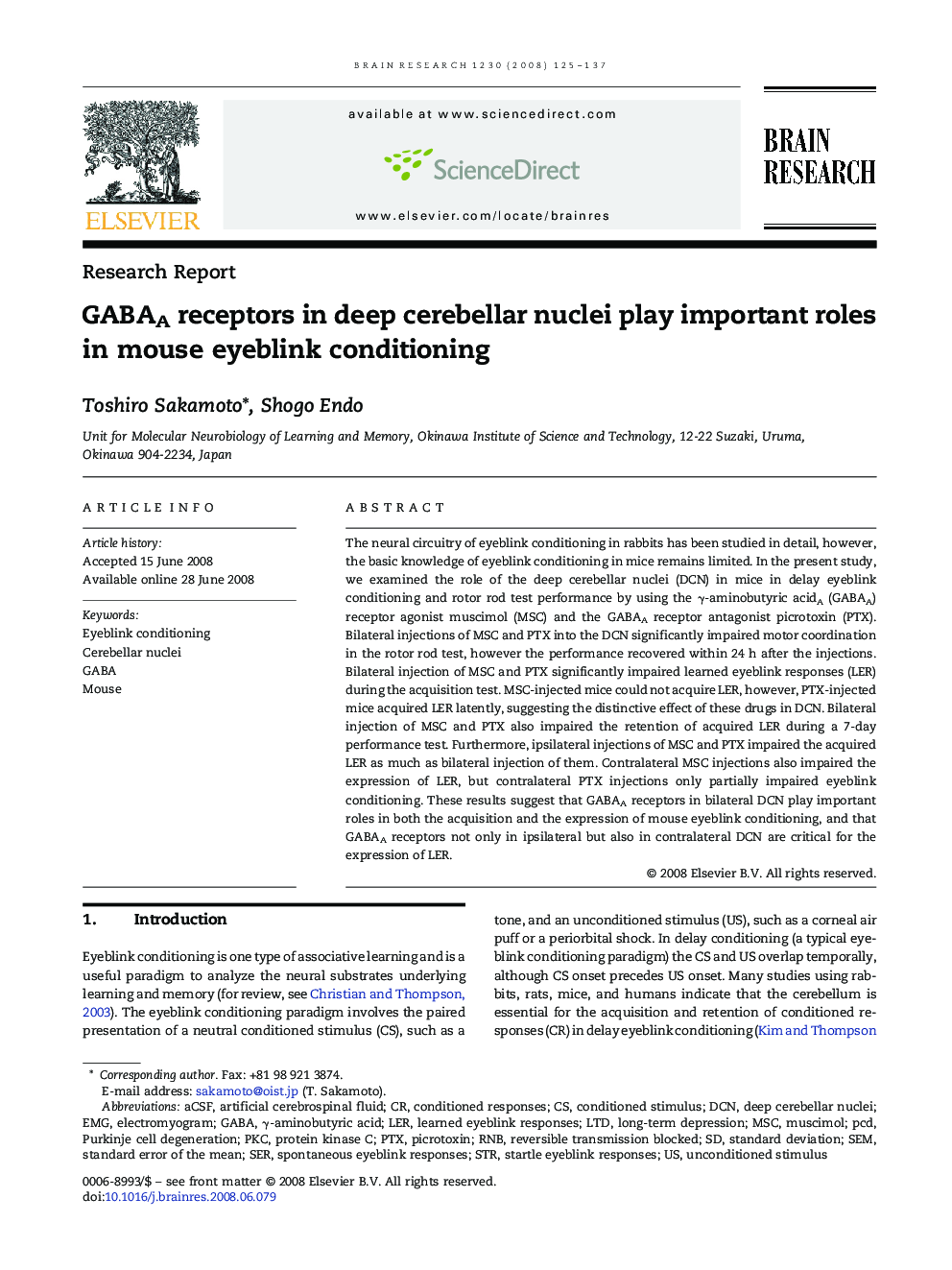| Article ID | Journal | Published Year | Pages | File Type |
|---|---|---|---|---|
| 4329168 | Brain Research | 2008 | 13 Pages |
Abstract
The neural circuitry of eyeblink conditioning in rabbits has been studied in detail, however, the basic knowledge of eyeblink conditioning in mice remains limited. In the present study, we examined the role of the deep cerebellar nuclei (DCN) in mice in delay eyeblink conditioning and rotor rod test performance by using the γ-aminobutyric acidA (GABAA) receptor agonist muscimol (MSC) and the GABAA receptor antagonist picrotoxin (PTX). Bilateral injections of MSC and PTX into the DCN significantly impaired motor coordination in the rotor rod test, however the performance recovered within 24 h after the injections. Bilateral injection of MSC and PTX significantly impaired learned eyeblink responses (LER) during the acquisition test. MSC-injected mice could not acquire LER, however, PTX-injected mice acquired LER latently, suggesting the distinctive effect of these drugs in DCN. Bilateral injection of MSC and PTX also impaired the retention of acquired LER during a 7-day performance test. Furthermore, ipsilateral injections of MSC and PTX impaired the acquired LER as much as bilateral injection of them. Contralateral MSC injections also impaired the expression of LER, but contralateral PTX injections only partially impaired eyeblink conditioning. These results suggest that GABAA receptors in bilateral DCN play important roles in both the acquisition and the expression of mouse eyeblink conditioning, and that GABAA receptors not only in ipsilateral but also in contralateral DCN are critical for the expression of LER.
Keywords
DCNRNBPurkinje cell degenerationPCDPTXPKCaCSFSTRMSCγ-aminobutyric acidlong-term depressionelectromyogramEMGstandard deviationSEReyeblink conditioningstandard error of the meanLERartificial cerebrospinal fluidLTDunconditioned stimulusconditioned stimulusSEMmuscimolMousecerebellar nucleideep cerebellar nucleiconditioned responsesProtein kinase CPicrotoxinGABA
Related Topics
Life Sciences
Neuroscience
Neuroscience (General)
Authors
Toshiro Sakamoto, Shogo Endo,
